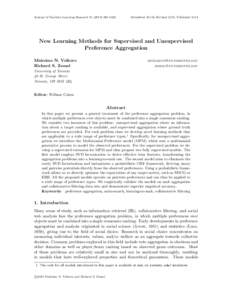<--- Back to Details
| First Page | Document Content | |
|---|---|---|
 Date: 2014-03-31 14:49:59Psychometrics Choice modelling Preference Model theory Aggregation problem Economics Microeconomics Pairwise comparison |
Add to Reading List |
| First Page | Document Content | |
|---|---|---|
 Date: 2014-03-31 14:49:59Psychometrics Choice modelling Preference Model theory Aggregation problem Economics Microeconomics Pairwise comparison |
Add to Reading List |